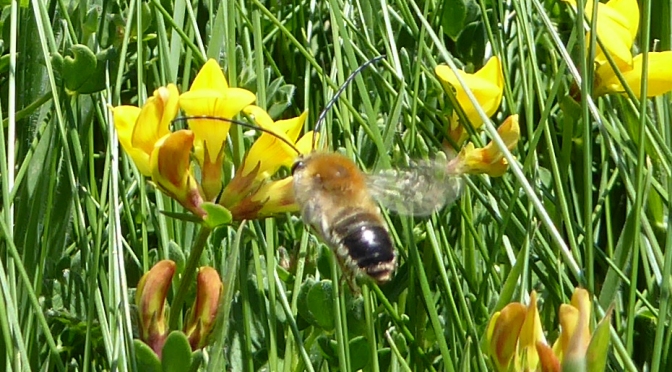The continual wet weather combined with the dismal world and national news were getting me down. Then Sunday dawned with unexpected sunshine. I had to get outside and decided to walk up the lane near our house. This was four weeks to the day since a previous visit which formed the subject of my last post and I was interested to see how much had changed since then.
The lane was a mosaic of light and shadow that morning, windy in places with the arrival of Storm Kathleen, muddy underfoot but easy walking. Flowers in different shades of yellow including primroses, dandelions and celandine had been, since my last visit, joined by buttercups to decorate the edges of the lane and there was a general sense of lush growth expressing the life force of spring. Trees were greening, ferns unfurled new fronds and the number and range of flowers had increased with stitchwort and bluebells now enhancing the new season’s celebration. The banks of wild garlic (ramsons) that line much of the lane had filled out. The leaves were now mature and covered the ground although there were still very few of the starry white flowers as if the plants were waiting for a signal to start their show.
All this was both interesting and therapeutic and I much enjoyed the walk but there were two events that morning that I want to describe in more detail.
The first was an odd but beautiful sight I encountered nestling on the bank at the side of the path. Pushing upwards through the vegetation was a reddish poker-shaped spear about 5 cm long partly surrounded by a thin, protective green cowl. This is the most obvious part of a very unusual flower and perhaps the most perfect example I have seen. The scientific name of the plant is Arum maculatum and most flower books refer to it as Lords and Ladies. For many years, though, I have known it as cuckoo pint. I have a flower book dating from the late 1960s which calls it cuckoo pint so perhaps that is where I learnt it but how did this unusual name arise?
A little research revealed that the distinctive shape of the flower has generated much ribald humour, often gender related, with the plant attracting a host of local names reflecting this. Some examples are: “Adam and Eve”, “cows and bulls”, “naked boys”, “willy lily”, “Kitty come down the lane, jump up and kiss me”. Apparently, cuckoo pint is another of these. “Cuckoo” has long had amorous connotations and “pint” is a shortening of the old English name pintle meaning a penis. There seems to have been a shift away from this name over the past half century, but I shall continue to call it cuckoo pint, now with an added smile on my face.
Putting the naming aside, the plant is also unusual for its pollination strategy. Hidden at the bottom of the cowl, surrounding the poker-shaped spear are a ring of female flowers, above that a ring of male flowers and then a ring of bristly hairs. When the female flowers are ready, they emit a fetid odour that attracts small flies which enter the flower and get trapped by the bristles. If the flies are carrying pollen, they will pollinate the female flowers and pick up more pollen from the male flowers when they are ready. Eventually, the bristles wither and the flies are released to pollinate another plant. All of this results in clusters of bright orange-red berries along the lane in the autumn.
Further up the lane, a break in the sycamore and hazel scrub on the right-hand side was filled by a small tree covered in white blossom. It caught the sun that morning, looking as though a sudden sharp snowfall had decorated the boughs (see picture at the head of this post). I stood there for a while, enjoying the warmth of the sun, examining the small white flowers, trying to get a good photo. For a short time, I was lost in a dreamy world of flowers and photos!
Suddenly, I felt something nudge the back of my right knee, jolting me out of my reverie. This was a shock and I had no idea what had happened until, when I turned round, there was a small dog looking up at me as if to say hello. Judging from the state of my trousers the dog must have nudged me with a muddy paw.
The dog’s owner soon appeared and was very apologetic. Seeing the white blossom tree that had held my attention, she asked what it was. I explained that this was blackthorn. She replied, saying that it looked so beautiful at this time of year and for her it was “Spring’s bridal veil”.
After the dog had nudged me, I had stepped back quickly not noticing some bright yellow dandelions nearby and nearly treading on them. When I looked down there was a honey bee-sized insect on one flower, wallowing in the petals, probably drinking nectar. A closer look revealed that the insect was a furry bee, very fresh with well-defined white stripes on a black background. This was an ashy mining bee (Andrena cineraria) named for the black and white colouration which some see as ashes.
………………………
The lane was a glorious patchwork of light, form and colour that morning and the warmth of the spring sunshine and the sense that nature was moving ahead mostly normally did wonders for my mood. I was very glad to have come out and the poetic conversation with the dog owner was an unexpected bonus.
I walked the lane on April 7th 2024
For more information on this lane click here
































































